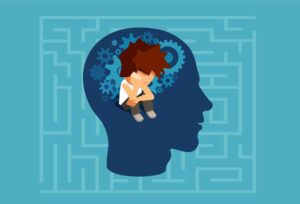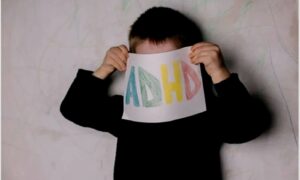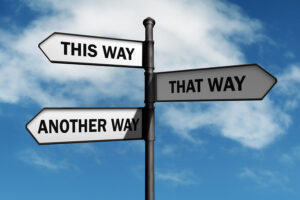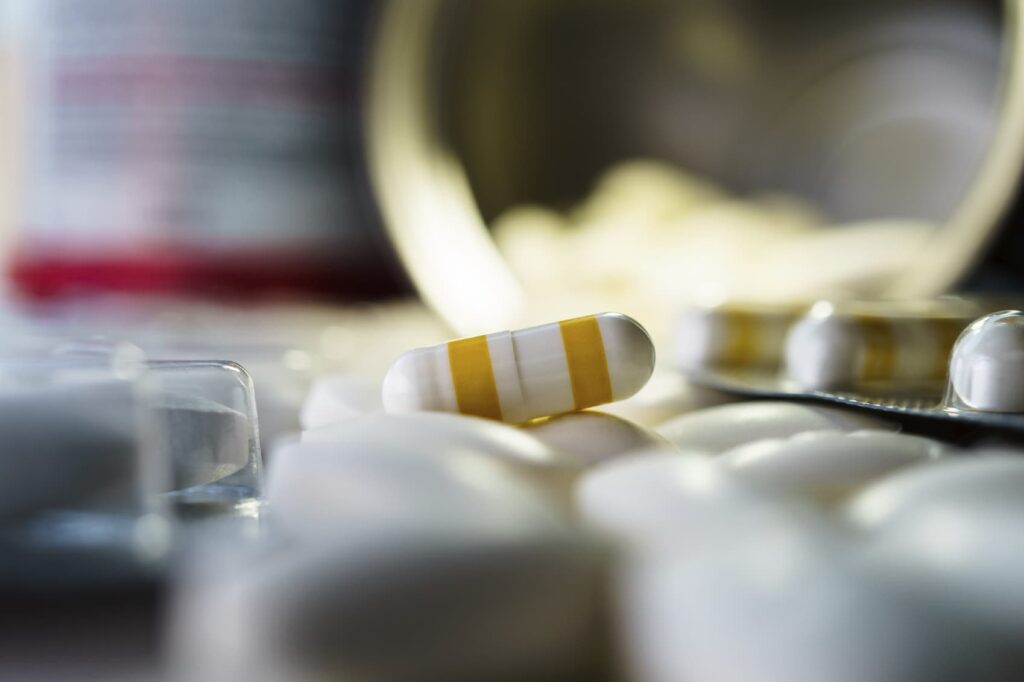If you are a parent of a child who has been recently diagnosed with ADHD, you may be wondering if there is anything you can do to help your child. There are many different treatments for ADHD, including medication and therapy. One drug that you may want to consider is viloxazine. Viloxazine is an antidepressant that has been shown to be effective in treating ADHD symptoms. In this blog post, we will discuss the pros and cons of using viloxazine for ADHD treatment.
Contents
Defining ADHD
 ADHD is described as a pattern of inattention and/or hyperactive-impulsive behaviors that interfere with functioning or development. ADHD begins in childhood, but can also be diagnosed in adults. It is important to note that symptoms will vary from person to person.
ADHD is described as a pattern of inattention and/or hyperactive-impulsive behaviors that interfere with functioning or development. ADHD begins in childhood, but can also be diagnosed in adults. It is important to note that symptoms will vary from person to person.
For some people with ADHD, it may be difficult to sit still for long periods of time, pay attention to details, or follow instructions. For others, symptoms may include making careless mistakes, being easily distracted, or daydreaming.
Moreover, the condition of ADHD can be further broken down into two types: inattentive type and combined type. Inattentive type is when a person predominantly displays symptoms of inattention, while the combined type is when a person exhibits symptoms of both inattention and hyperactivity-impulsivity. Some of the major signs of inattention include:
- frequently failing to give close attention to details or making careless mistakes
- having difficulty sustaining attention during tasks or activities
- appearing not to listen when spoken to directly
- often failing to follow through on instructions and fail to finish schoolwork or chores
- often having difficulty organizing tasks and activities
So, these are some signs that reflect ADHD and the importance of treatment. It is essential to visit a doctor if you or your loved ones are experiencing these symptoms. After a complete diagnosis, the doctor can prescribe the necessary medication.
Viloxazine for ADHD
 Viloxazine is a norepinephrine reuptake inhibitor (NRI) that has been shown to be effective in the treatment of ADHD. It is thought to work by increasing levels of norepinephrine, which is a neurotransmitter that is involved in attention and focus.
Viloxazine is a norepinephrine reuptake inhibitor (NRI) that has been shown to be effective in the treatment of ADHD. It is thought to work by increasing levels of norepinephrine, which is a neurotransmitter that is involved in attention and focus.
Viloxazine was first approved for use in France in 1982 and has since been used extensively in Europe for the treatment of ADHD. Also, because it is not a stimulant, viloxazine has been used as an alternative to stimulants for the treatment of ADHD.
Viloxazine has been shown to be effective in treating the symptoms of ADHD, including inattention, impulsivity, and hyperactivity. It has also been shown to improve academic performance in children with ADHD. As it works by increasing norepinephrine levels, viloxazine may also help to improve focus and attention.
If you or your child has been diagnosed with ADHD, talk to your doctor about whether viloxazine may be a good option for treatment. Viloxazine is a safe and effective medication that can help to improve symptoms of ADHD.
Dosage Information
When you decide to take any medication, it is important to have complete information about the drug.
Viloxazine is available in tablet form and the usual starting dose is 100 mg twice a day. The dose may be increased by 100 mg every week until the desired response is achieved or until side effects become bothersome. The maximum recommended dose is 400 mg per day.
Viloxazine should be taken with food and should be taken at the same time each day.
If you miss a dose of viloxazine, take it as soon as possible. If it is almost time for your next dose, skip the missed dose and go back to your regular dosing schedule. Do not take two doses at once.
Moreover, the doses are different for different people, so it is important to talk to your doctor about what dose is right for you. And, people with ADHD should not stop taking their medication suddenly, as this can cause withdrawal symptoms and be dangerous.
Benefits Of Viloxazine
 Viloxazine has been shown to be an effective treatment for ADHD in clinical trials. It can improve attention, focus, and impulsivity in people with ADHD. Also, the symptoms of this condition can be improved with viloxazine.
Viloxazine has been shown to be an effective treatment for ADHD in clinical trials. It can improve attention, focus, and impulsivity in people with ADHD. Also, the symptoms of this condition can be improved with viloxazine.
This medication can also help people with anxiety and depression. It can improve mood and reduce stress levels. In addition, viloxazine can help to improve sleep quality. In fact, this medication also has benefits for other comorbid situations with ADHD, such as:
- anxiety and depression
- bipolar
- migraine headaches
- Tourette Syndrome
Viloxazine may also have benefits beyond treating ADHD. For instance, research suggests that viloxazine can help to improve: working, memory, cognitive flexibility, executive functioning, and response inhibition. It can also help to improve social and emotional functioning. This medication can also help to reduce levels of the stress hormone cortisol.
So, if you or someone you know has ADHD, viloxazine may be worth considering as a treatment option. This medication can offer many benefits and may help to improve the quality of life for those with this condition.
Risks Of Taking Viloxazine For ADHD
It is believed that viloxazine may improve some of the symptoms of ADHD by altering levels of chemicals in the brain, such as norepinephrine and dopamine. However, there are potential risks associated with taking this drug for ADHD. These include:
- Dizziness
- Nausea
- Headache
- Fatigue
- Dry mouth
- Constipation
These are some common signs that people taking viloxazine for ADHD may experience. However, if you are experiencing any of these side effects, it is important to speak with your doctor. Some serious side effects could be:
- An irregular heartbeat
- Severe headache
- Blurred vision
- Hallucinations
- Mood changes
- Agitation
It is important to note that these are rare side effects and most people taking viloxazine for ADHD will not experience them. However, if you do experience any of these side effects, it is important to speak with your doctor immediately.
Viloxazine for ADHD is a drug that is worth considering if you are looking for an alternative to traditional treatments. However, it is important to be aware of the potential risks associated with taking this drug. If you experience any side effects, it is important to speak with your doctor immediately.
Things To Discuss Before Trying Viloxazine
 There are a few things to keep in mind before trying viloxazine for ADHD treatment. Some of these include:
There are a few things to keep in mind before trying viloxazine for ADHD treatment. Some of these include:
- Viloxazine should not be used in children under the age of six.
- Not currently FDA approved for the treatment of ADHD, though it is approved for the treatment of the major depressive disorder.
These are some basic things to keep in mind but always speak with a doctor before starting any new medication. Some of the things to discuss with your doctor includes:
- Any other medical conditions that viloxazine may interact with.
- How viloxazine will affect any other medications currently being taken.
- The possible side effects of viloxazine.
- If you are pregnant or breastfeeding.
- Any other medications that have been tried in the past for ADHD treatment and how have they worked.
- It is important to be honest about this so the doctor can make the best decision for treatment.
So, there are things that you should focus on and keep in mind before trying viloxazine for the treatment of ADHD. Make sure to speak with a doctor to get the best understanding of if this medication is right for you.
Viloxazine has been shown to be an effective treatment option for some people with ADHD. It is important to discuss all options with a doctor to find the best treatment for you or your child.
Alternatives Options
 It is important to consider all options when it comes to treating ADHD. Medication is not the only answer, and for some people, it may not be the best option.
It is important to consider all options when it comes to treating ADHD. Medication is not the only answer, and for some people, it may not be the best option.
There are many different types of medication available for ADHD, and each has its own set of pros and cons. It is important to work with a doctor to find the right medication for each individual. However, some of the more common options include:
Stimulants
These are the most commonly prescribed type of medication for ADHD. They work by increasing levels of dopamine and norepinephrine in the brain, which can improve focus and concentration. Stimulants can be very effective, but they also have a potential for abuse and addiction. Some of the examples include:
Non-stimulants
These medications work in a different way than stimulants and can be just as effective. They are often used as an alternative for people who cannot tolerate the side effects of stimulants or who are at risk for abuse or addiction. Some examples of non-stimulants are:
Viloxazine is a non-stimulant medication that has shown promise in treating ADHD. It is believed to work by increasing levels of norepinephrine, a neurotransmitter that plays an important role in attention and focus. A small study found that viloxazine was effective in reducing ADHD symptoms in children and adolescents.
Psychotherapy
 It is believed that psychotherapy for ADHD can help patients in different ways. It can teach patients how to better cope with their symptoms. This can also help them understand their thoughts and feelings better, which can lead to improved self-esteem. Lastly, it can provide support and guidance on how to manage day-to-day life with ADHD.
It is believed that psychotherapy for ADHD can help patients in different ways. It can teach patients how to better cope with their symptoms. This can also help them understand their thoughts and feelings better, which can lead to improved self-esteem. Lastly, it can provide support and guidance on how to manage day-to-day life with ADHD.
The most common type of psychotherapy used to treat ADHD is cognitive-behavioral therapy (CBT). CBT can help patients learn how to better manage their symptoms. It can also teach them how to control their thoughts and emotions.
Other types of psychotherapy that have been used to treat ADHD include:
- Interpersonal therapy
- Family therapy
- Play therapy
- Art therapy
- Music therapy
- Dance/movement therapy
If you are considering psychotherapy for your child with ADHD, it is important to find a therapist who has experience treating children with ADHD.
Self-Care
This should always be the foremost and primary step. Because even though you are taking medication for your ADHD, it is still important to do things that help you relax and take care of yourself. This could be anything from going for walks to journaling, to painting.
It doesn’t have to be something that takes a lot of time or energy, just something that helps you clear your mind and feel better. Some of these could include:
- Getting regular exercise
- Eating a balanced diet
- Avoiding caffeine and alcohol
- Getting enough sleep
- Meditation or mindfulness practices
These are just a few examples, but the point is that self-care is important for everyone, especially for those with ADHD. And it doesn’t have to be complicated or time-consuming. Just find what works for you and make it a part of your regular routine.
Conclusion
To conclude, viloxazine for ADHD is generally a well-tolerated drug with a low incidence of serious side effects. While it is not currently approved by the FDA for this condition, it may be worth considering as a treatment option for those who have not responded adequately to other ADHD medications.
As always, be sure to discuss any potential new treatments with your child’s doctor before starting them. However, if you are confused or unable to make progress with traditional ADHD treatments, viloxazine may be worth a try.
For more information, please contact MantraCare. ADHD is a neurodevelopmental disorder characterized by difficulty in paying attention, hyperactivity, and impulsivity. If you have any queries regarding Online ADHD Counseling experienced therapists at MantraCare can help: Book a trial ADHD therapy session


